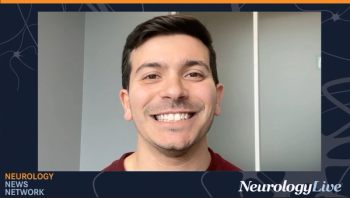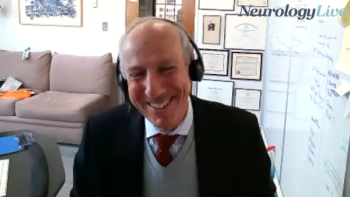
Optimizing Pediatric NeuroICU Treatment Through Precision and Collaboration
Key Takeaways
- Pediatric neurocritical care is shifting toward individualized treatment, emphasizing precise diagnostics and therapeutics tailored to each child's unique condition.
- Advances in immunotherapies and EEG-based biomarkers are transforming the management of refractory seizures and status epilepticus.
At the 2025 CNS Annual Meeting, Craig Press, MD, discussed tailoring neuroICU treatment for pediatric patients, advances in seizure management, and how multidisciplinary collaboration can improve outcomes.
In pediatric neurocritical care, treatment decisions often extend beyond stopping seizures. Clinicians are increasingly challenged to tailor therapies to each child’s underlying cause, response to medication, and disease progression, as new diagnostic tools, immune-targeting therapies, and EEG-based biomarkers reshape how refractory seizures and status epilepticus are managed.
At the
NeurologyLive: What was your main goal in developing this session, and what were some of the biggest takeaways?
Craig Press, MD: The biggest goal was to get people thinking differently about how we approach pediatric neurocritical care. The children we see in the ICU are incredibly diverse. One patient might present with seizures or status epilepticus, another with a neuroinflammatory condition. While we have clinical care pathways that guide the majority of common cases, each child can respond differently.
We have to make sure every patient receives the right care at the right time. That means thinking more precisely about diagnostics and therapeutics on an individual level. It really requires us to reexamine how we respond to each patient, not just to the diagnosis.
What were some of the key clinical pearls from your session?
We broke the session into several sections. Dr Benedetti discussed acute-onset, highly refractory seizures, specifically FIRES [febrile infection-related epilepsy syndrome] and NORSE [new onset refractory status epilepticus]. These are children who have never had epilepsy before but suddenly start seizing and do not stop. We are learning that many of these cases have underlying immune causes, and the treatments need to reflect that.
Traditionally, we have relied on broad approaches like steroids, plasmapheresis, or IVIG [intravenous immunoglobulin] when we suspect a neuroimmune process. Now, newer immunotherapies such as anakinra and tocilizumab are showing promise. We still have a lot to learn about which patients will respond best. There is a real need for molecular diagnostics and biomarkers to guide therapy selection.
Dr Harrar spoke about managing status epilepticus using newer antiseizure medicines. A recent trial on ganaxolone, a neurosteroid therapy, did not meet both primary end points, but there were encouraging efficacy signals that suggest it may have a role. Ketamine is another agent being used more often in children with status, though we are still defining optimal timing and patient selection. She recently published data on its use in children with cardiac disease, and a new study on early ketamine in pediatric and adult status is about to begin.
You mentioned research being at a middle ground right now. How do you balance ongoing discovery with the practical realities of patient care?
That is one of the biggest challenges in pediatrics. Often, a drug is developed and approved for adults with a neurologic condition such as status epilepticus, NORSE, or a genetic epilepsy, but it has not been adequately tested in children. Yet we still have access to those therapies, and we have to decide how and when to use them.
To tackle that, large collaborative networks have formed to pool data across institutions. I am part of one called PedQuEST, which aims to create an infrastructure that connects pediatric centers nationally. This helps in 2 ways. For common diseases, we can collect enough data to refine treatment targeting, and for rare conditions such as FIRES and NORSE, we can combine small patient numbers from many centers to generate meaningful evidence. That is essential for moving from anecdotal to evidence-based care.
Beyond data sharing, what other barriers are you encountering in pediatric neurocritical care?
One major challenge is access to rapid genetic testing. For children presenting with early epilepsy, identifying the cause can take weeks or even months. Rapid tests exist, but not every institution has them, and they are not always available for every patient. That delay can really affect treatment decisions.
Another issue is expertise. We are developing more sophisticated tools such as quantitative EEG, immunologic assays, and cytokine profiling, but not everyone has the training to interpret those results or integrate them into care. Building multidisciplinary teams that include geneticists, immunologists, and data specialists will be key. But that takes resources, education, and time.
Thankfully, organizations like the Child Neurology Society and the American Epilepsy Society are embedding more educational content into their meetings. Still, it is going to take time and sustained investment to scale that expertise nationally.
Any closing thoughts you would like to share?
What excites me most is that we are getting closer to truly individualized care in pediatric neurology. When we can match the right treatment to the right child, it shortens the diagnostic journey, helps families feel more confident in care decisions, and allows us to set realistic expectations.
It also strengthens alignment across the medical team. Better diagnostics, clearer prognostication, and stronger family connections to advocacy groups all contribute to improved patient outcomes and experiences. At the end of the day, the goal is to bring precision, compassion, and collaboration together for every child we treat.
Newsletter
Keep your finger on the pulse of neurology—subscribe to NeurologyLive for expert interviews, new data, and breakthrough treatment updates.



































